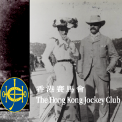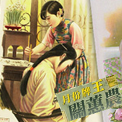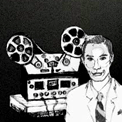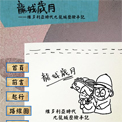-
History & SocietyGeography & EnvironmentArt & CultureCommunication & Media
-
History & SocietyGeography & EnvironmentArt & CultureCommunication & Media
-
View Oral History RecordsFeatured StoriesAbout Hong Kong Voices
-
Subsidiary websites
-
Hong Kong Memory Project
Expansion of Cinema Chains
Shaw’s film circuits entered a fast-growing period in the 1950s and 1960s. “Southern Screen”, Shaw’s official magazine, published an interview with Shaw Run-me in which he talked about its glorious period in history, “Among the 127 cinemas Shaw Brothers own, many are newly built and some are existing establishments which have been re-built or refurbished. But I can say they’re all equipped with first-class sound systems, lighting systems and seats…Our film distribution is also worth mentioning. We own the distribution rights of over 4000 films from various countries, and we’re the largest distributor in Southeast Asia.” This was an illustration of Shaw’s direction of development in that period.
Stepping into the 1960s, Shaw’s continued to expand its film circuit business. In addition to inviting other large-scale cinemas (such as King’s Theatre, Hollywood Theatre, etc.) to join Shaw’s to form joint circuits, they constructed two flagship cinemas of their own – the establishment of Jade Theatre and Pearl Theatre in 1969 and 1971 respectively marked the peak of development of Shaw’s distribution network. Besides screening the Mandarin films under the Shaw banner, they also focused on distributing the first-run foreign films. By the end of 1969, the number of cinemas in the allied circuits screening first-run Mandarin films had increased to 14 from a mere 5 in 1966.
In the late-1960s, Shaw’s circuit had already linked up about 14 cinemas. To further exploit the advantage of the circuit system, Shaw’s adopted the policy of double-circuit distribution and single-circuit screening by dividing the cinemas under its banner into circuit A and B. Take the screening of The Singing Escort as an example. Circuit A included King’s, Golden, National, Odean, International, Asia Theatre, etc.; and Circuit B included Hollywood, Capitol, Sky, Union, Wing Wah, Ming Sing, Ray Theatre, etc. The grouping of cinemas of each circuit could be altered according to market conditions. In other words, each new film could be screened in succession in about 10 to 14 cinemas, and the schedule could be flexibly coordinated depending on market response. In 1968, “Southern Screen” gave an account of the effects of Shaw’s circuits, “ In the past year, the screening of Shaw’s productions in Hong Kong was generally in steady progress. Now Shaw’s has implemented the policy of double-circuit distribution and single-circuit screening for the 14 cinemas under its banner and the screening of Shaw’s own production and of the films it distributes are organized according to the individual circumstances. The average revenue for the films produced by Shaw’s was about HK$450,000 to HK$680,000 per film. Box office sales climbed 49% compared to last year’s figure. A few renowned films, such as One-Armed Swordsman, The Assassin, The Golden Swallow and the like, had box office record breaking through the HK$1,000,000 mark.” The marketing efficacy of the circuits’ distribution network could thus be seen.
Photos
Tags:
no tagsCopyright © 2012 Hong Kong Memory Project. All rights reserved.











